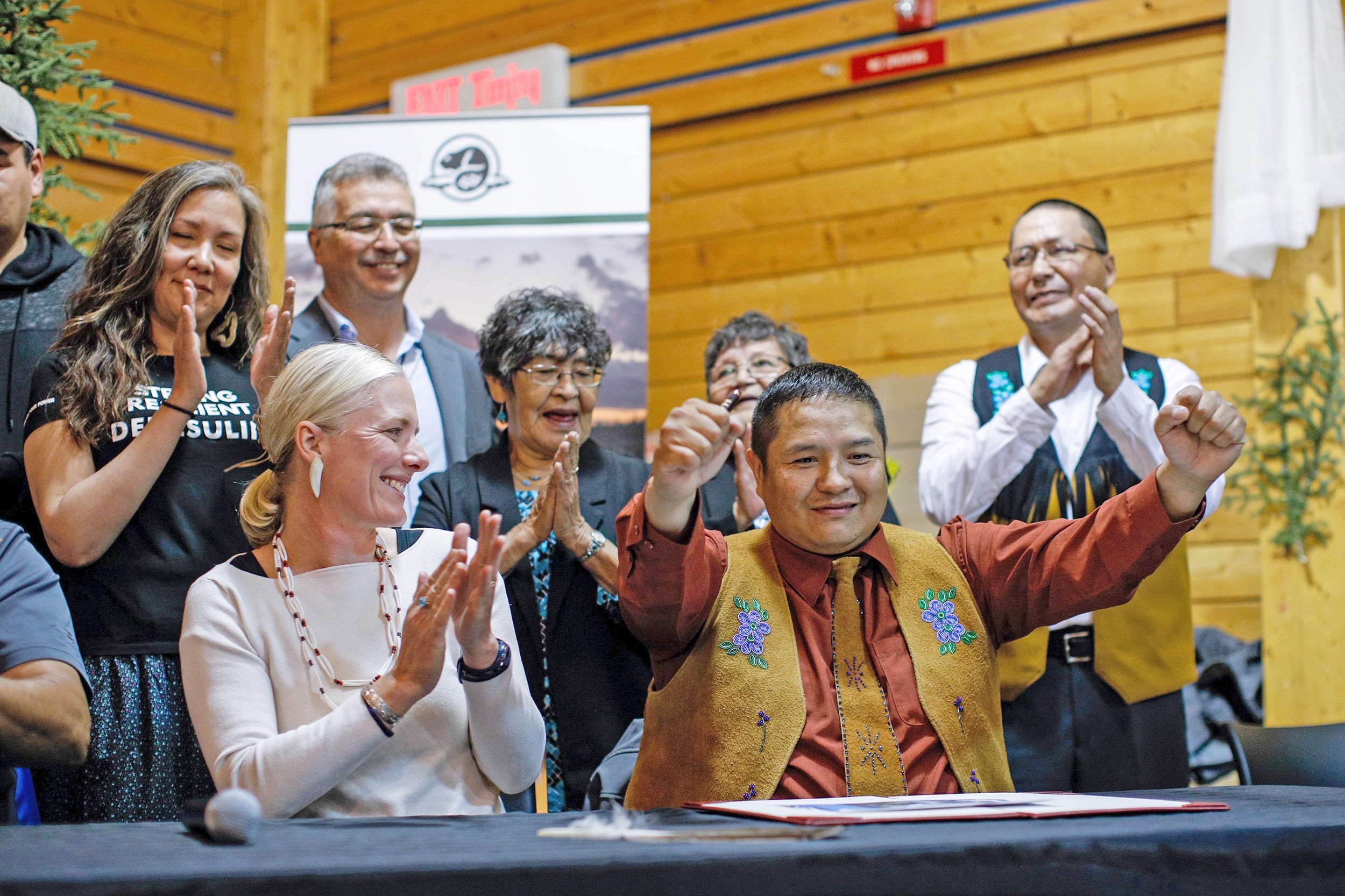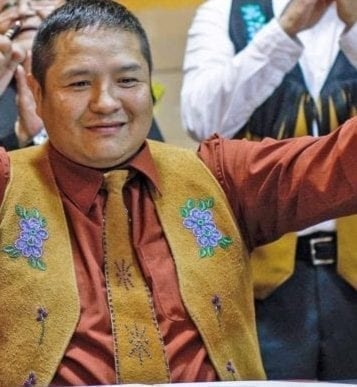It was decades in the making, but the massive Thaidene Nene National Park Reserve – roughly the same size as Great Slave Lake – is a dream come true for the Lutsel K'e Dene First Nation, says its chief.

photo courtesy of Catherine McKenna/Twitter
"The protection and stewardship of Thaidene Nene is the sacred responsibility of the Lutsel K'e Dene First Nation, as passed down to us through the generations from our elders,” stated Chief Darryl Marlowe in a news release.
“Achieving the protection of Thaidene Nene for the Lutsel K'e Denesoline is a decades-long dream, and is a critical step toward ensuring our way of life can be maintained and shared with all Canadians.”
The first nation will protect Thaidene Nene – or "Land of the Ancestors" in the Denesoline Yati language – with patrols of the Ni hat'Ni Dene Rangers also known as Watchers of the Land. As a national park reserve, Indigenous people can continue hunting, fishing, trapping, gathering and practicing spiritual activities.
The entire park reserve northeast of the tiny community of Lutsel K'e is roughly 26,500 square kilometres of “nationally significant” pristine boreal forest, tundra, and freshwater ecosystems in and around the East Arm of Great Slave Lake, stated information from the Nature Conservancy of Canada.
The core is a 14,305-square-kilometre national park protected by Parks Canada, which sits beside 12,220 square kilometres of GNWT-protected conservation areas.

The Government of Canada will put $40 million toward infrastructure and for the operations of the national park reserve in the first 12 years and $3.4 million annually for operations thereafter, stated a Parks Canada news release.
An operational management board and a regional management board, based on a consensus model, will be established for the national park.
The GNWT will contribute $290,000 annually to ongoing management of the park, Environment and Natural Resources Minister Robert C. McLeod told the legislative assembly on Oct. 22.
The creation of Thaidene Nene was celebrated as Canada's newest national park reserve – one of 47 national park reserves and national parks in Canada – during community celebrations in Fort Resolution and Lutsel K'e over two days, Aug. 20 and 21.
Catherine McKenna, minister of Environment and Climate Change Canada and minister responsible for Parks Canada, signed agreements with the GNWT, the Lutsel K'e Dene First Nation, the Northwest Territory Metis Nation, and the Deninu K'ue First Nation, and with the Yellowknives Dene First Nation in absentia, stated a news release from Parks Canada.
The park is also hoped to bring economic opportunities to the region. That could be realized with the creation of up to 18 jobs in resource management and residents have already started to plan for tourism, which could include an interpretation and administrative centre in Lutsel K’e, a community of approximately 300 people.
However, the Thaidene Nene could also have a negative impact on the future of resource development in the undeveloped region in the southeastern NWT on the far side of the park, asserts the NWT Chamber of Mines.
The lobby group is calling on Parks Canada to make allowance for a future corridor through Thaidene Nene, as is seen in other parks, including Banff, Jasper, Nahanni, Ukkusiksalik, the chamber stated in a news release.
“The park will hamper future benefits to Northerners from resource development in this region, much larger than the park,” stated chamber president Gary Vivian, adding Parks Canada refused to negotiate a transportation corridor.
“Our industry members have emphatically told us that they are not against the creation of national parks and conservation areas.
“However, they are deeply concerned, as should the public and Indigenous governments be, when governments can ignore, misinterpret or twist the law to suit their own purposes.”
The chamber alleges that in advancing the Thaidene Nene National Park Reserve and the adjacent territorial protected area, the federal and territorial governments “subverted the intended purpose of the Mackenzie Valley Resource Management Act, the NWT’s foundational and much lauded environmental legislation that is rooted in Indigenous land claims.”
Stated Vivian: “It is poor governance when a double standard is at play. A development of a park or a mine are to be treated the same under the law, but governments have found a way to shortcut the law to suit their purposes.”
The mineral industry is the largest private sector employer and contributor to the economy of the NWT, according to the chamber, and contributes over 40 per cent of government revenues.
“However, the minerals industry is in the midst of a 12-year decline in exploration investment needed to sustain the sector, despite having one of the most attractive mineral endowments in the country,” stated the chamber.
“One of the primary causes for the lower investment in exploration in the NWT relative to other Canadian jurisdictions is the erosion of access to prospective lands.”
The chamber stated that a typical diamond mine is approximately 15 square kilometres and can generate billions of dollars in employment, business and government benefits before being safely reclaimed upon closure.
“These considerations were not found in any socio-economic analysis provided on either the park of the protected area,” stated Vivian, alleging a lack of transparency and diligence in creating the boundaries, a poorly funded resource assessment, lack of socio-economic analysis, and Parks Canada’s refusal to negotiate the transportation corridor.
